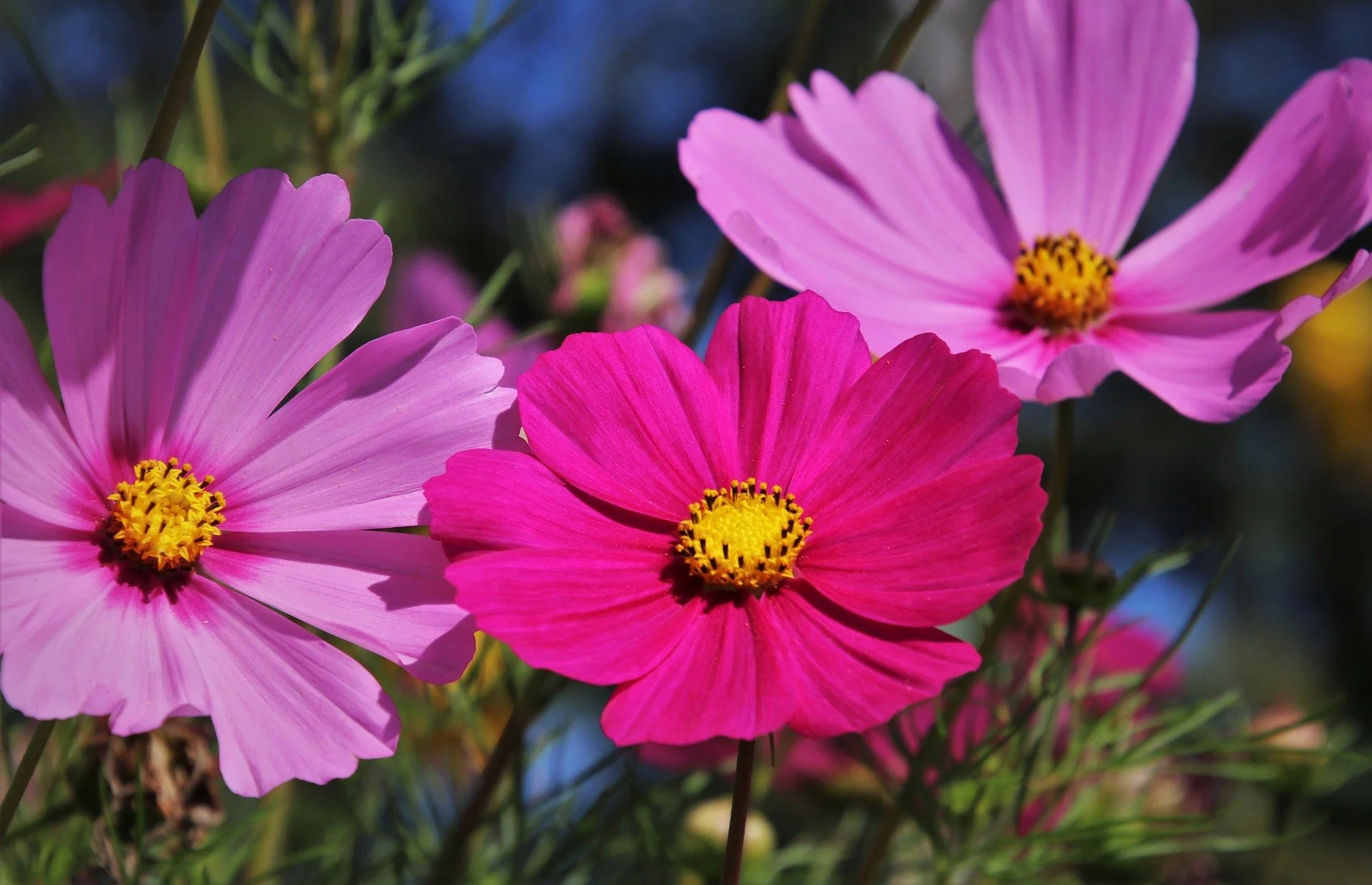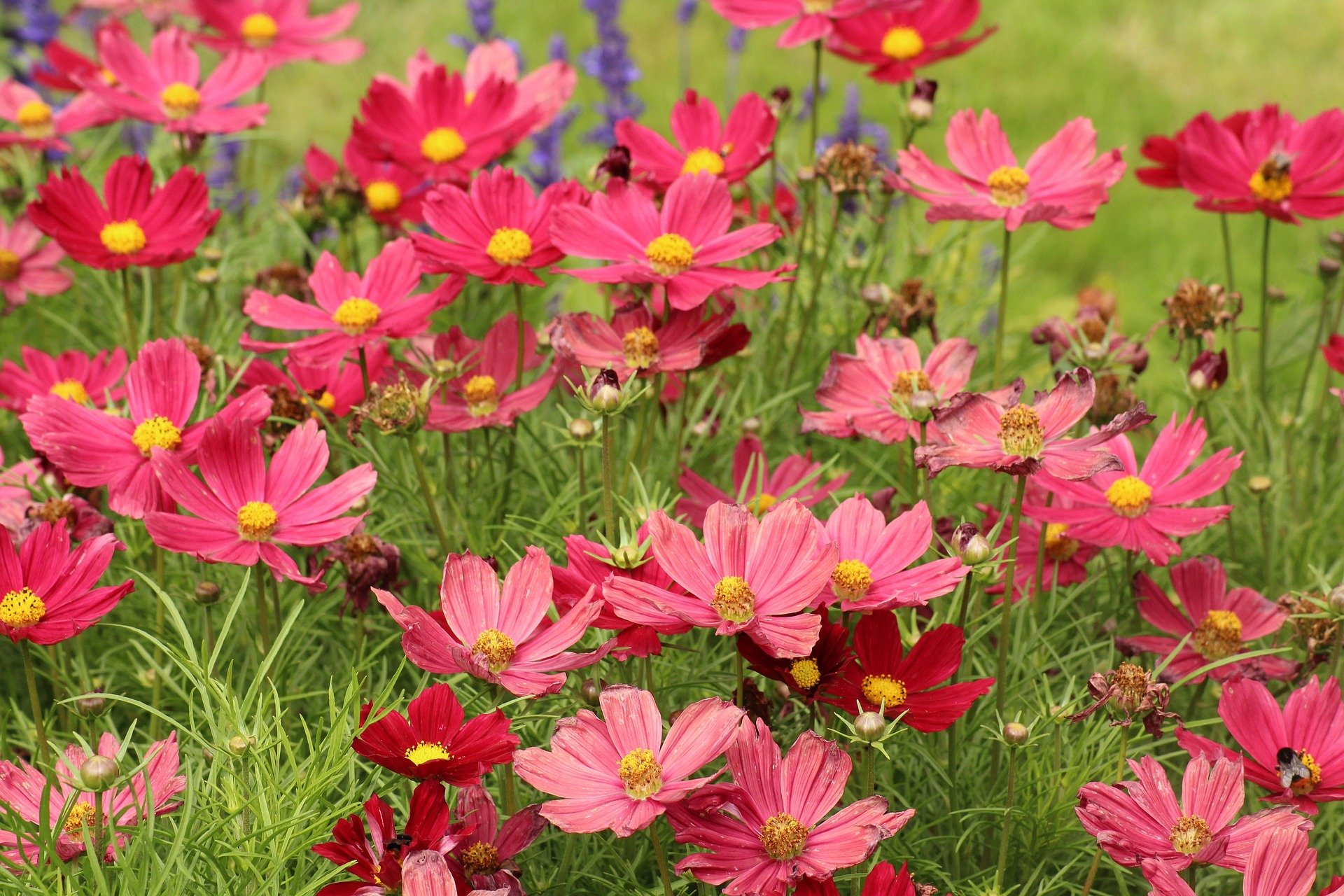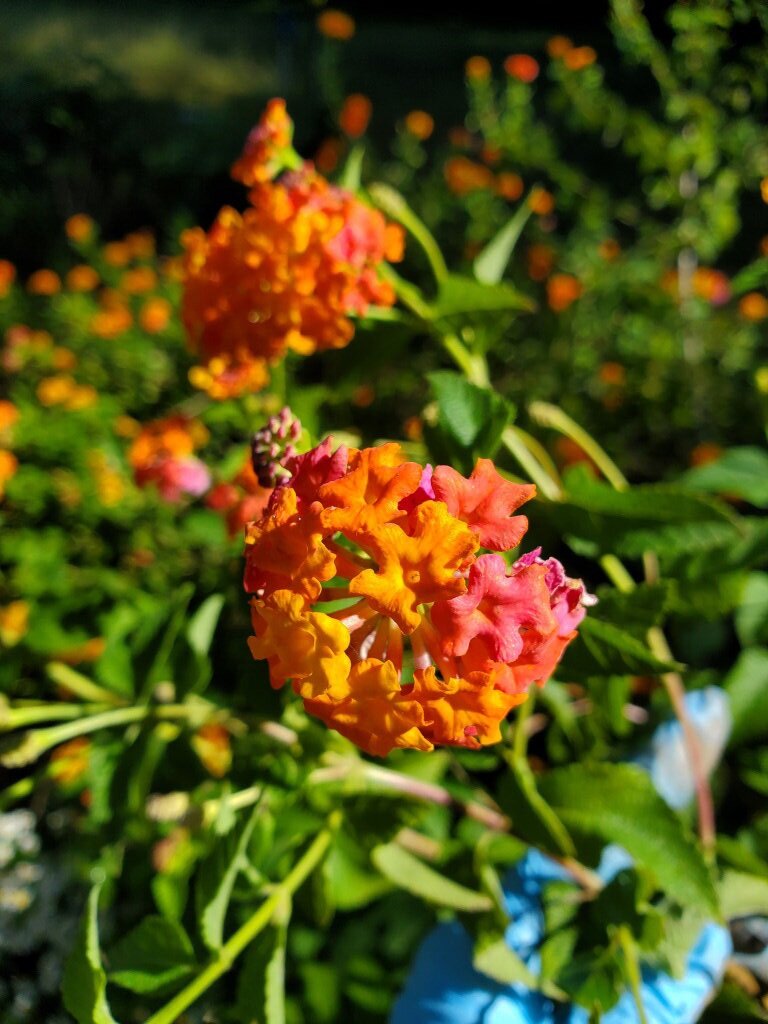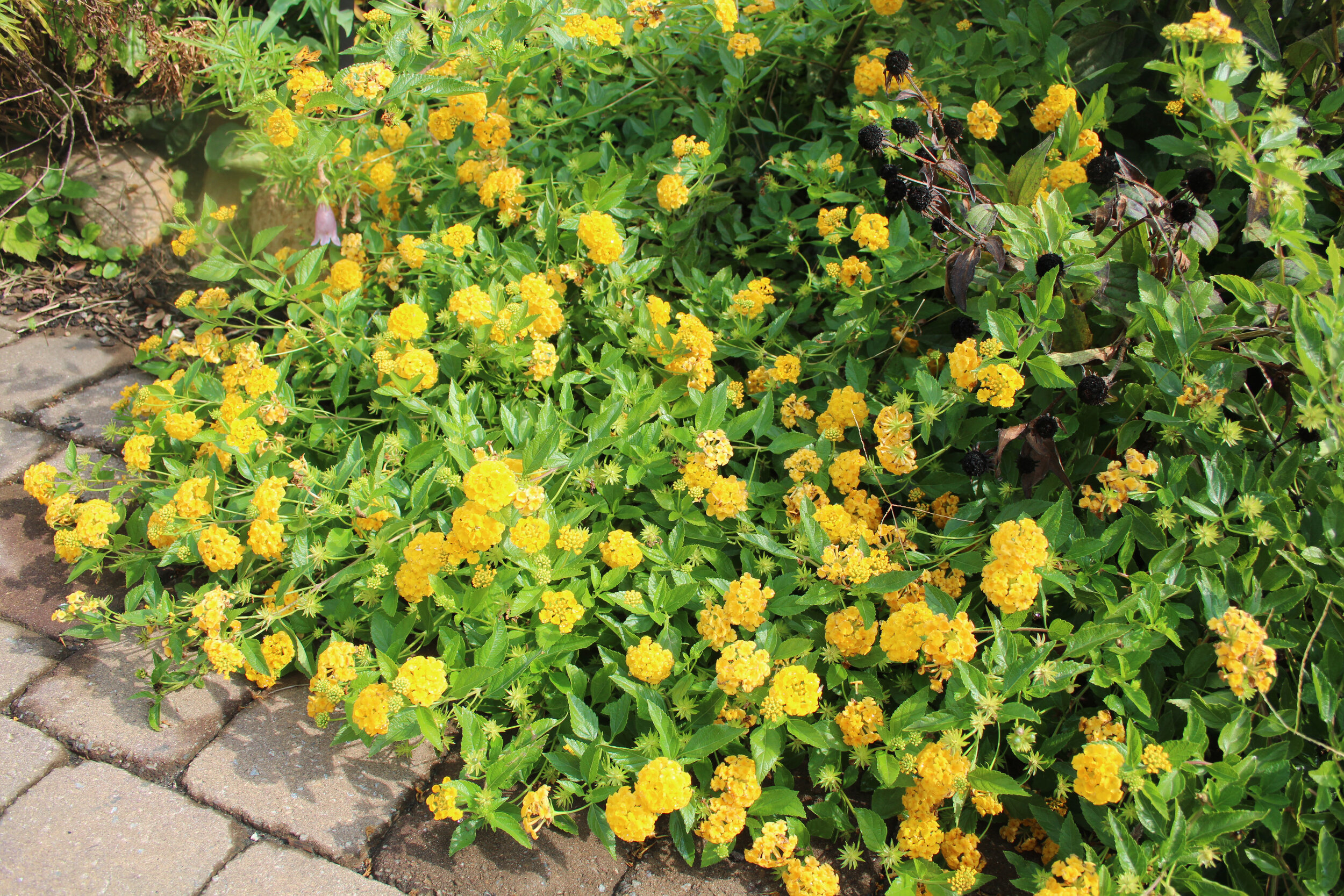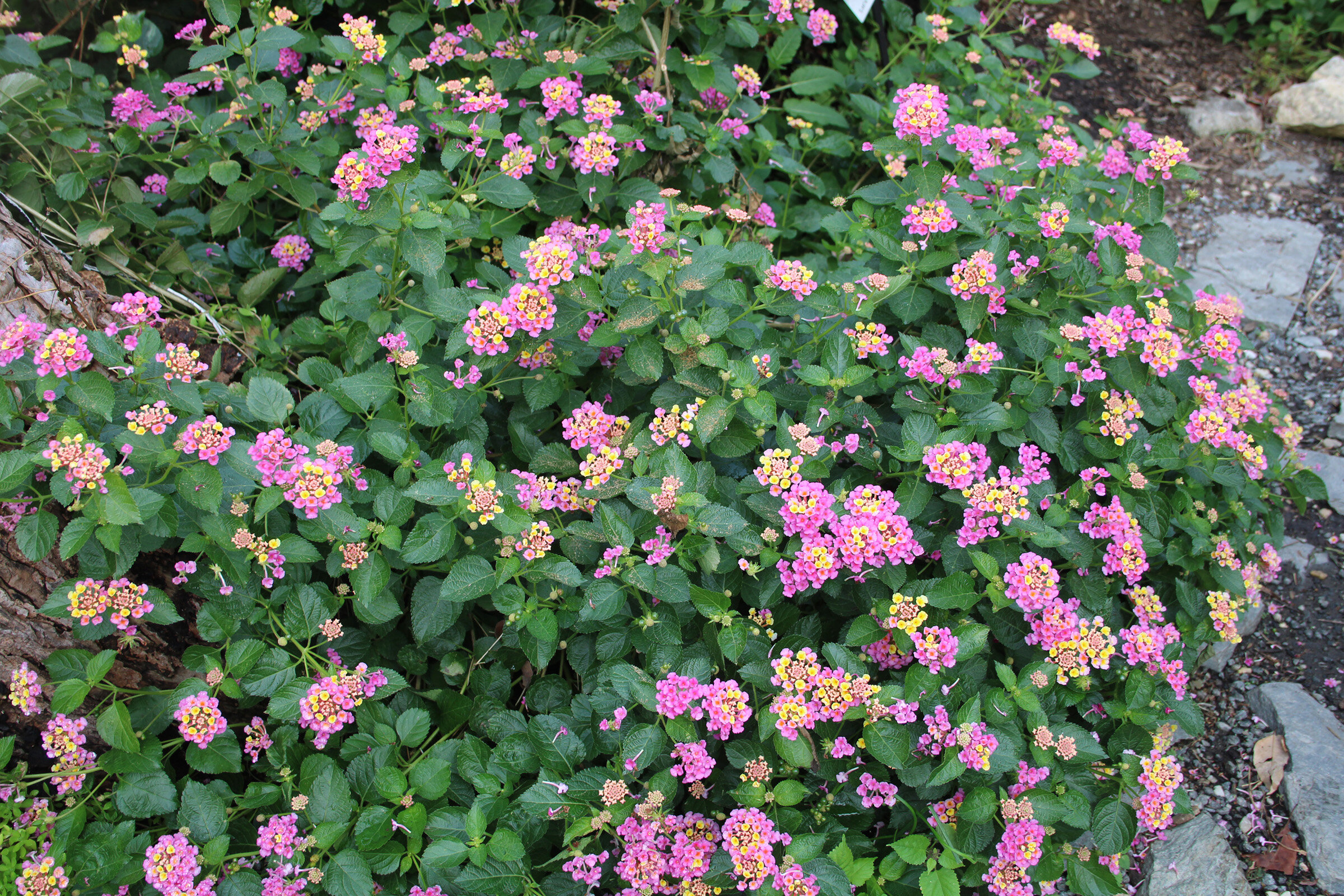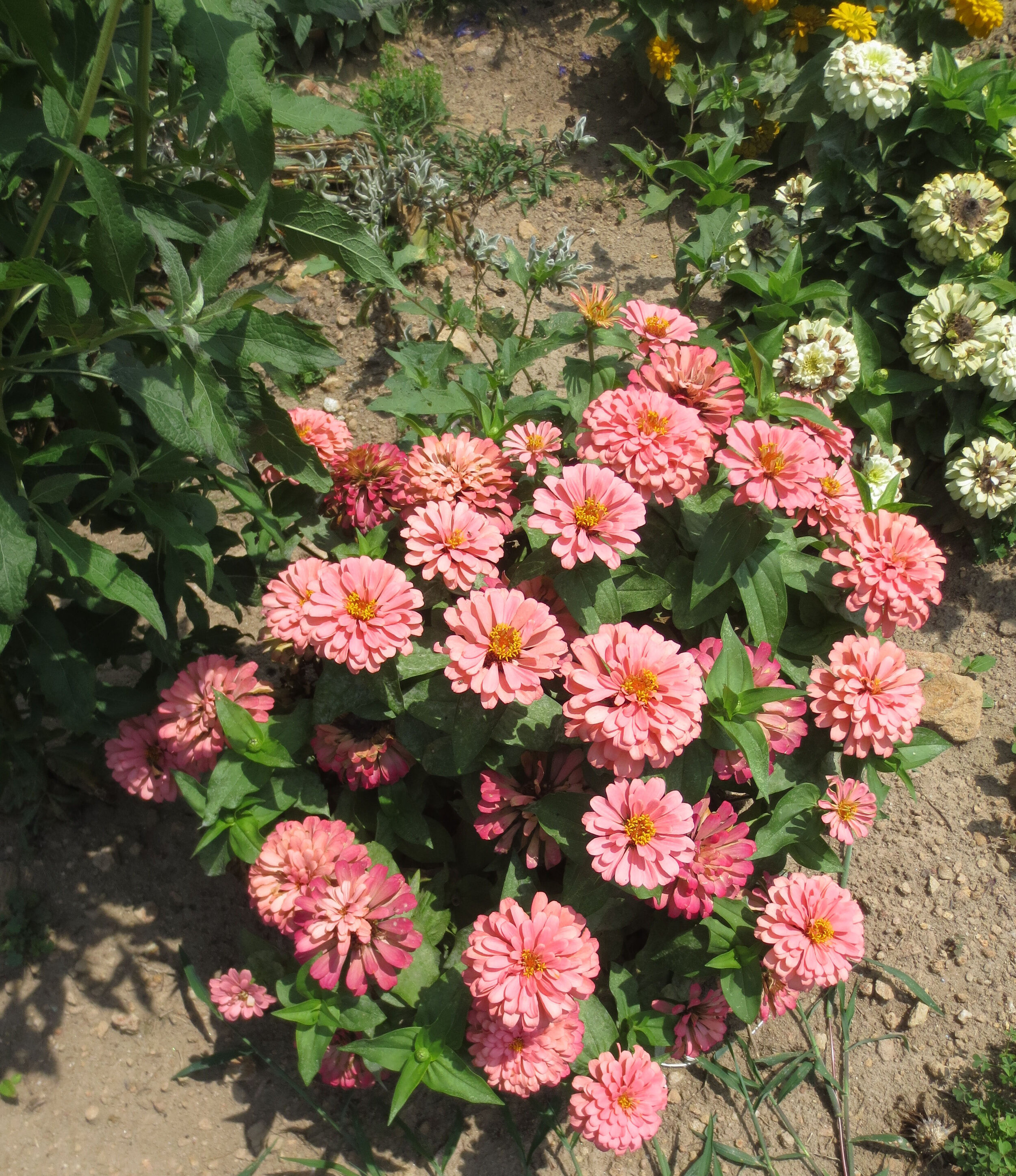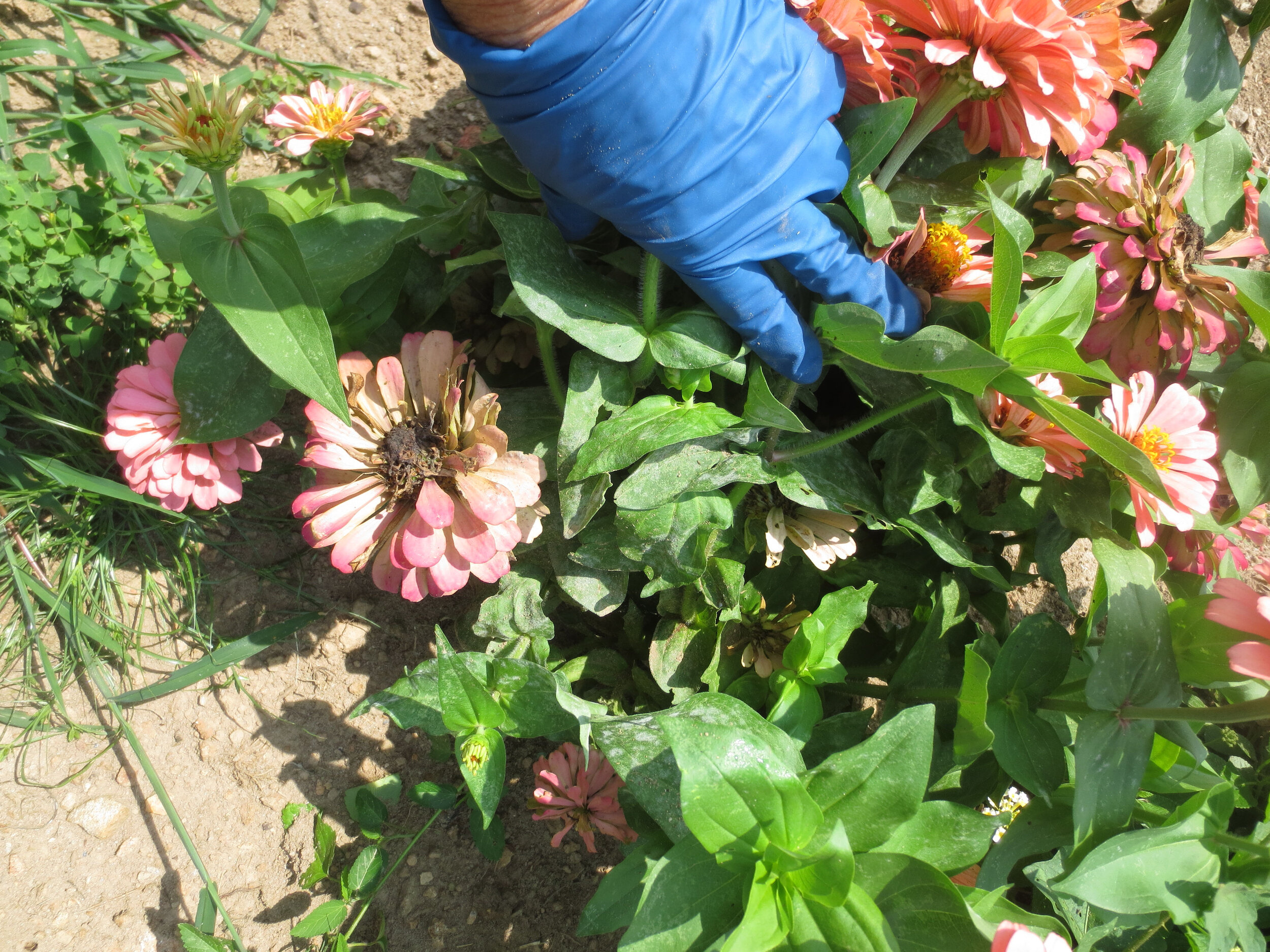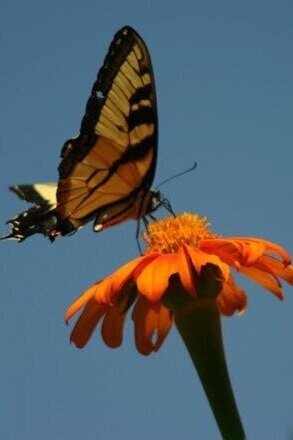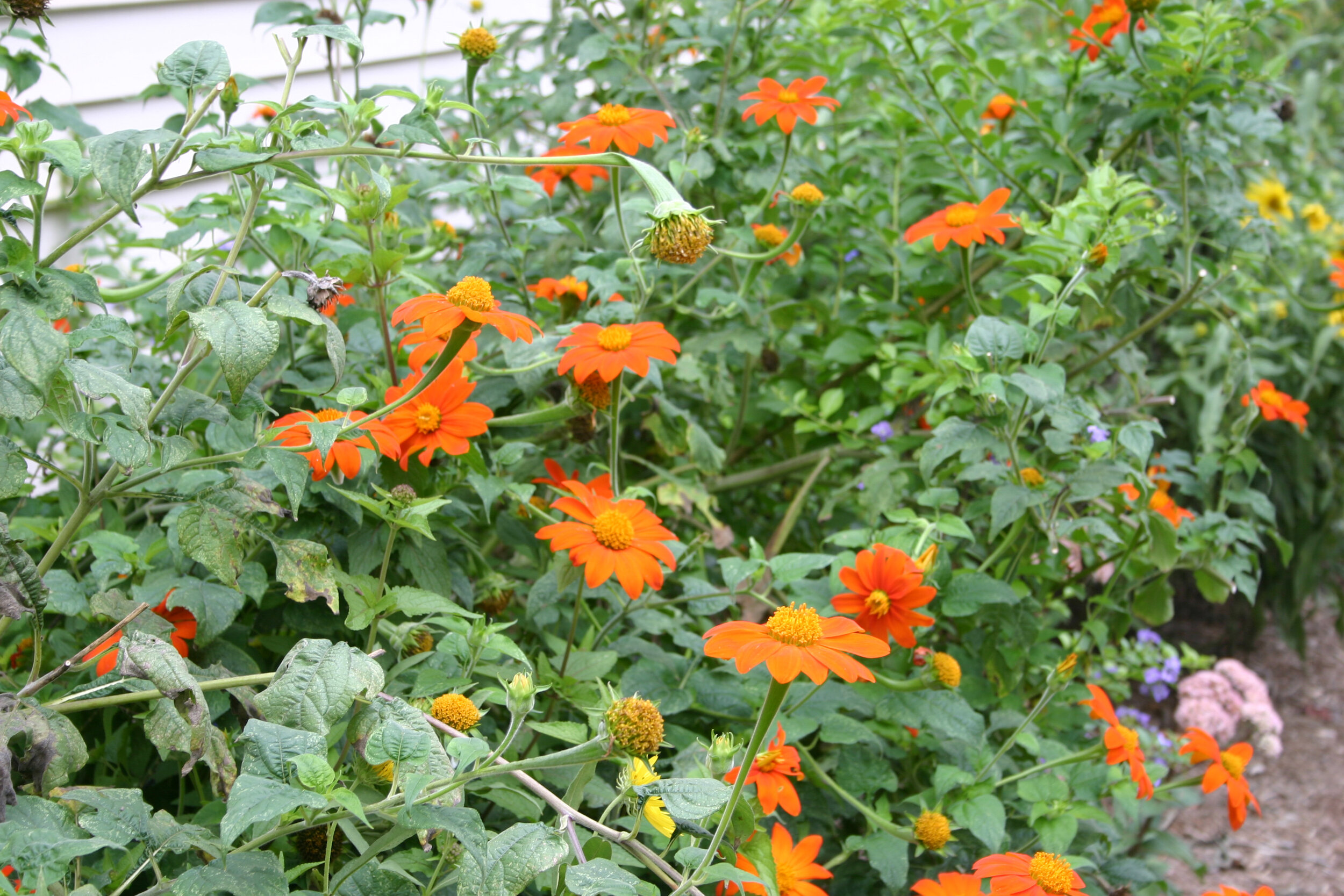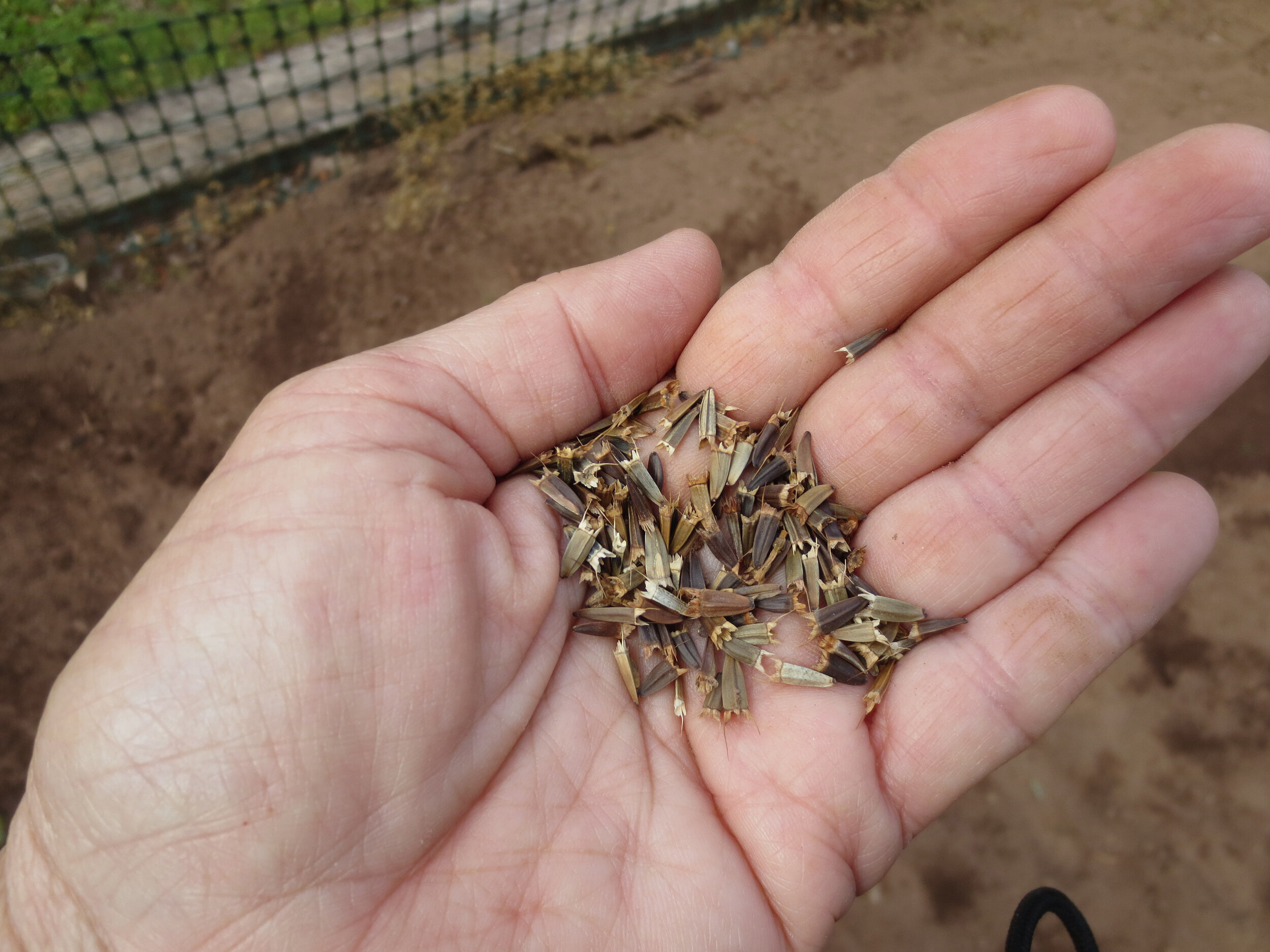Lantana camara excels in the southeast. It tolerates heat, humidity, and drought. Lantana begins flowering in mid-summer and blooms continuously until frost. Most Lantanas are annuals, but a few are reliably winter-hardy. Plant hybridizers are releasing more cold-tolerant cultivars each year.
Lantana blooms consist of a grouping of small flowers carried together in a form known as an umbrel (think “umbrella”). They are irresistible to bees and butterflies. Though there are some single-color varieties, flowers are usually a combination of colors. The colors appear to change with age as individual flowers open within the umbrel, so a flower that starts as solid red may become red on the outer flowers, orange on the middle ring, and yellow at the center.
Removing spent flowers before plants generate seeds, or at least before the seeds ripen and turn black, will result in many more blooms. Utility scissors are a good tool for this job. Lantanas bloom at the ends of their stems, so they may become lanky as the summer progresses. Prune as part of deadheading to keep the plants compact, cutting back to a lower set of leaves. Like other plants with square stems, Lantana is easy to propagate. Unfortunately, they seem to lure whiteflies into the greenhouse, so I have ended the process of overwintering the tender types.
Grow Lantana in full sun, in slightly acid soil that is well drained, in garden zones 7 through 11. Provide light irrigation only until roots are established. Wet soil will induce root rot. Plant outdoors in spring after frost and freezes are past. Lantanas are especially salt tolerant, so they perform well in beach gardens as well as adjacent to parking lots where salt de-icer is used in winter.
Some Lantanas grow vigorously to become large, rounded shrubs. Check plant tags to determine mature height and whether the cultivar is upright or trailing. The trailing forms work well in hanging baskets or planters. ‘Miss Huff’ is a cold-hardy, upright variety that grows well in upstate South Carolina. I measured one in a business parking lot at 60 inches tall. Of course, this was in its fifth or sixth year. I am certain that it was not that large in the first year or two. ‘New Gold’ is another cultivar that is reliably cold hardy and shorter than ‘Miss Huff.’ Its flowers are school bus yellow, and pair well with purple Verbena ‘Homestead.’ ‘Santana’ is less floriferous but is clothed in lovely variegated foliage.
If yours does not leaf out in spring, do not automatically assume it died from winter cold. Lantanas are late to wake up after winter’s end, and may only start to show new growth in May. Here is a hint to help keep your Lantana coming back year after year. Do not prune dormant plants in fall or winter. Instead, wait until spring, when the plant has begun showing signs of life. Yes, this means that it will be a pile of leafless sticks throughout winter. It seems a small price to pay for an amazing show during the growing season.
Lantana leaves are feel rough, and are fragrant when touched or brushed. Sensitive skins may experience contact dermatitis. Deer or rabbits do not browse it. All plant parts are toxic if consumed. Do not eat or allow your pets to nibble. Birds are immune to the toxins and eat ripe seeds.

